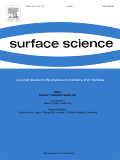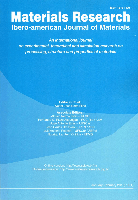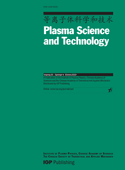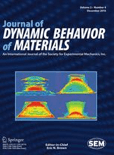
Russian Physics Journal
metrics 2024
Fostering Dialogue in the World of Physics
Introduction
Russian Physics Journal is a reputable publication in the field of Physics and Astronomy, published by SPRINGER. With its history dating back to 1990, it has provided a platform for disseminating significant research findings while fostering academic dialogue within the scientific community. The journal, identifiable by its ISSN 1064-8887 and E-ISSN 1573-9228, offers a diverse range of articles that cover various aspects of physics, although it currently holds a Q4 category ranking in the 2023 quartile system, placing it within the lower tier of its field. Researchers and students can benefit from its insights despite the journal's ongoing evolution, striving to improve its impact as it ranks #194 out of 243 in the General Physics and Astronomy category on Scopus. While the journal does not offer open access options, its archived content remains crucial for those seeking to enhance their understanding of contemporary physics challenges. Located at ONE NEW YORK PLAZA, SUITE 4600, NEW YORK, NY 10004, UNITED STATES, the Russian Physics Journal continues to play a role in the academic landscape, contributing to the body of knowledge that drives innovation and exploration in the physical sciences.
Metrics 2024
 0.16
0.16 0.40
0.40 0.40
0.40 27
27Metrics History
Rank 2024
Scopus
IF (Web Of Science)
JCI (Web Of Science)
Quartile History
Similar Journals

PLASMA PHYSICS REPORTS
Unveiling the Mysteries of Plasma and AstronomyPLASMA PHYSICS REPORTS, published by PLEIADES PUBLISHING INC, is a distinguished journal that caters to the intricate and evolving field of plasma physics and its applications within condensed matter physics and astronomy. With an ISSN of 1063-780X and an E-ISSN of 1562-6938, the journal serves as a pivotal platform for researchers, professionals, and students to disseminate groundbreaking work and foster collaboration among experts in the field. The journal operates as a non-open access resource, contributing to its reputation for curating high-quality research findings. Over its converged years from 1996 to 2024, the journal has established itself within the Q3 category across both condensed matter physics and miscellaneous physics and astronomy in the 2023 quartiles. With current Scopus rankings placing it in the 42nd percentile for physics and astronomy and the 27th percentile for condensed matter physics, PLASMA PHYSICS REPORTS stands as a vital resource for advancing knowledge and innovation in plasma research.

SURFACE SCIENCE
Illuminating the Science Beneath the SurfaceSURFACE SCIENCE is a prominent journal in the fields of Condensed Matter Physics, Materials Chemistry, and Surface Engineering, published by Elsevier in the Netherlands. With an ISSN of 0039-6028 and an E-ISSN of 1879-2758, the journal encompasses a wide range of research related to the physical and chemical properties of surfaces and interfaces, serving as a valuable resource for researchers, professionals, and students alike. As of 2023, it holds a Q3 ranking across multiple categories, indicating its significant contribution to its respective fields, despite room for improvement in its overall impact within the scientific community. Researchers will find that SURFACE SCIENCE provides a platform for innovative and interdisciplinary studies, making it essential for those looking to stay updated on emerging trends and technologies in surface science. While the journal is currently not open access, its reputation and robust indexing reinforce its importance in advancing scientific knowledge and fostering new discoveries.

Materials Research-Ibero-american Journal of Materials
Unlocking the potential of materials science for a global audience.Materials Research-Ibero-american Journal of Materials, published by the UNIV FED SAO CARLOS, DEPT ENGENHARIA MATERIALS, is a prominent platform dedicated to advancing the field of materials science. Launched in 1998, this Open Access journal has fostered a culture of inclusive knowledge sharing, allowing researchers and practitioners worldwide to access valuable insights in Condensed Matter Physics, Materials Science, Mechanical Engineering, and Mechanics of Materials. With a commendable Q3 ranking in these diverse categories in 2023, the journal provides a vital resource that bridges theoretical research and practical applications in materials technology. Covering a range of topics from novel material characterization to innovative engineering solutions, Materials Research serves as a critical forum for contributors across the globe, particularly those in Latin America. Researchers, students, and professionals are encouraged to engage with this journal, which operates with a clear commitment to high standards and is based in São Carlos, Brazil, further enhancing its relevance and appeal within the international materials research community.

Romanian Journal of Physics
Elevating physics discourse to new heights.Welcome to the Romanian Journal of Physics, a distinguished platform dedicated to advancing the field of physics and astronomy since its inception. Published by EDITURA ACAD ROMANE, this journal plays a pivotal role in disseminating high-quality research from Romania and around the globe, with an impressive impact factor that reflects its rigorous academic standards. With a focus on a broad range of topics in general physics and astronomy, it proudly maintains a Q2 ranking in its category for 2023, positioning itself among the top journals in the field. The journal, which has been converging valuable research contributions from 2008 until 2024, is accessible to a wide audience of researchers, professionals, and students interested in the latest developments and discoveries in physics. While it operates under a traditional publication model without Open Access, its commitment to quality research ensures that the contributions featured in its pages resonate well within the scientific community. We invite you to explore the rich findings published in the Romanian Journal of Physics and to engage with the vital discussions shaping the future of physics.

Nuclear Materials and Energy
Bridging Research and Application in Nuclear EnergyNuclear Materials and Energy is a premier open-access journal published by Elsevier, dedicated to the dynamic fields of nuclear science and materials engineering. Since its inception in 2015, the journal has made significant strides in disseminating cutting-edge research, establishing itself as a vital resource for researchers and professionals alike. With a commendable impact factor and ranked in the Q2 category for both Materials Science (miscellaneous) and Nuclear and High Energy Physics, and impressively in Q1 for Nuclear Energy and Engineering in 2023, Nuclear Materials and Energy stands out in the academic community. This journal aims to bridge the gap between fundamental research and practical applications, promoting innovative solutions in the efficient utilization of nuclear materials and energy technologies. Open access since 2015, the journal ensures wide dissemination and accessibility of crucial findings, making it an essential platform for advancing knowledge and fostering collaboration in these pivotal fields.

JETP LETTERS
Fostering Breakthroughs in Theoretical and Experimental ScienceJETP LETTERS, published by MAIK NAUKA/INTERPERIODICA/SPRINGER, is a prestigious journal in the field of physics and astronomy, which plays a pivotal role in disseminating groundbreaking research and innovative ideas since its inception in 1969. With an ISSN of 0021-3640 and an E-ISSN of 1090-6487, this journal aligns well with the interests of both seasoned researchers and emerging scholars, having achieved a 2023 category rank of Q3 for miscellaneous topics within physics and astronomy. Located in the United States at 233 SPRING ST, NEW YORK, NY 10013-1578, JETP LETTERS serves as a critical resource for its readership, offering exclusive insights and advancements across diverse areas of physics. While not open access, it hosts a collection of articles that refine theoretical approaches and experimental methods, providing both knowledge and inspiration to professionals and academics seeking to make impactful contributions to the scientific community. The journal’s quality is reflected in its Scopus ranking, where it stands at 39 out of 81 in the multidisciplinary category, placing it in the 52nd percentile, thus underscoring its significance and reliability as a scholarly outlet.

Uspekhi Fiziki Metallov-Progress in Physics of Metals
Exploring the Depths of Metal PhysicsUspekhi Fiziki Metallov - Progress in Physics of Metals, published by the G V KURDYUMOV INST METAL PHYSICS NAS UKRAINE, is a distinguished open-access journal that has been advancing the field of metal physics since 2000. With an ISSN of 1608-1021 and E-ISSN of 2617-0795, this journal is pivotal for disseminating rigorous research findings and innovations across diverse subfields including Condensed Matter Physics, Electronic, Optical and Magnetic Materials, and Fluid Flow and Transfer Processes. The journal's strong impact, reflected in its Q2 and Q3 quartile rankings across several categories and a commendable Scopus ranking, places it at the forefront of materials science and engineering. Researchers, professionals, and students can benefit from its rich repository of high-quality articles aimed at fostering knowledge and collaboration in metal physics. With an accessible repository and commitment to the open-access model, Progress in Physics of Metals strives to make significant contributions to the global scientific community, shaping the future of metal-based research.

PLASMA SCIENCE & TECHNOLOGY
Fostering Collaboration in Plasma Science AdvancementPLASMA SCIENCE & TECHNOLOGY is a distinguished academic journal published by IOP Publishing Ltd, focusing on the realm of condensed matter physics. With its inception in 2000 and continuing through 2024, the journal serves as a vital platform for disseminating groundbreaking research and developments in plasma science, encompassing experimental and theoretical studies that advance our understanding of plasma behavior and its applications. Although the journal is not open access, its insights are invaluable for researchers, professionals, and students devoted to the intricate physics of plasmas, particularly given its respectable Q2 quartile ranking within its category as of 2023 and a notable Scopus rank that places it within the 44th percentile among its peers. Published from the United Kingdom, the journal aims to foster collaboration and innovation in this essential field of study.

Journal of Dynamic Behavior of Materials
Fostering Breakthroughs in Material Behavior ResearchThe Journal of Dynamic Behavior of Materials, published by SpringerNature, serves as a premier platform for the dissemination of innovative research in the fields of materials science and mechanics of materials. With its ISSN 2199-7446 and E-ISSN 2199-7454, this international journal has established itself since its inception in 2015, showcasing groundbreaking insights into the dynamic properties and behaviors of various materials. Operating from Switzerland and headquartered in London, this journal embraces an open-access philosophy, albeit not entirely, to enhance research visibility. According to the Scopus rankings, it is positioned in the Q3 quartile for both materials science and mechanics of materials, indicating its growing prominence in the academic landscape. Researchers and professionals alike benefit from its wide-ranging contributions that address contemporary challenges and advancements, making it a critical resource for advancing knowledge and innovation in these crucial fields.

MOMENTO-Revista de Fisica
Bridging Knowledge Gaps in Physics and BeyondMOMENTO-Revista de Fisica is a distinguished academic journal published by UNIV NACL COLOMBIA, FAC SCI, based in the vibrant academic landscape of Colombia. With an ISSN of 0121-4470 and an E-ISSN of 0121-4470, this Open Access journal has been a pivotal platform for disseminating research since its shift to Open Access in 2012. It primarily serves researchers, professionals, and students interested in a diverse range of fields such as Electronic, Optical and Magnetic Materials, Geophysics, History and Philosophy of Science, and Physical and Theoretical Chemistry. With an evolving focus that spans from 2019 to 2024, MOMENTO contributes significantly to the understanding of contemporary challenges and advancements in physics and its interdisciplinary applications. Despite its current Q4 rankings in several categories and Scopus rankings indicating growth areas, the journal plays a crucial role in nurturing a scholarly dialogue in less represented topics within the sciences. By bridging gaps in knowledge and fostering new ideas, MOMENTO-Revista de Fisica continues to attract authors and readers committed to pushing the boundaries of research.